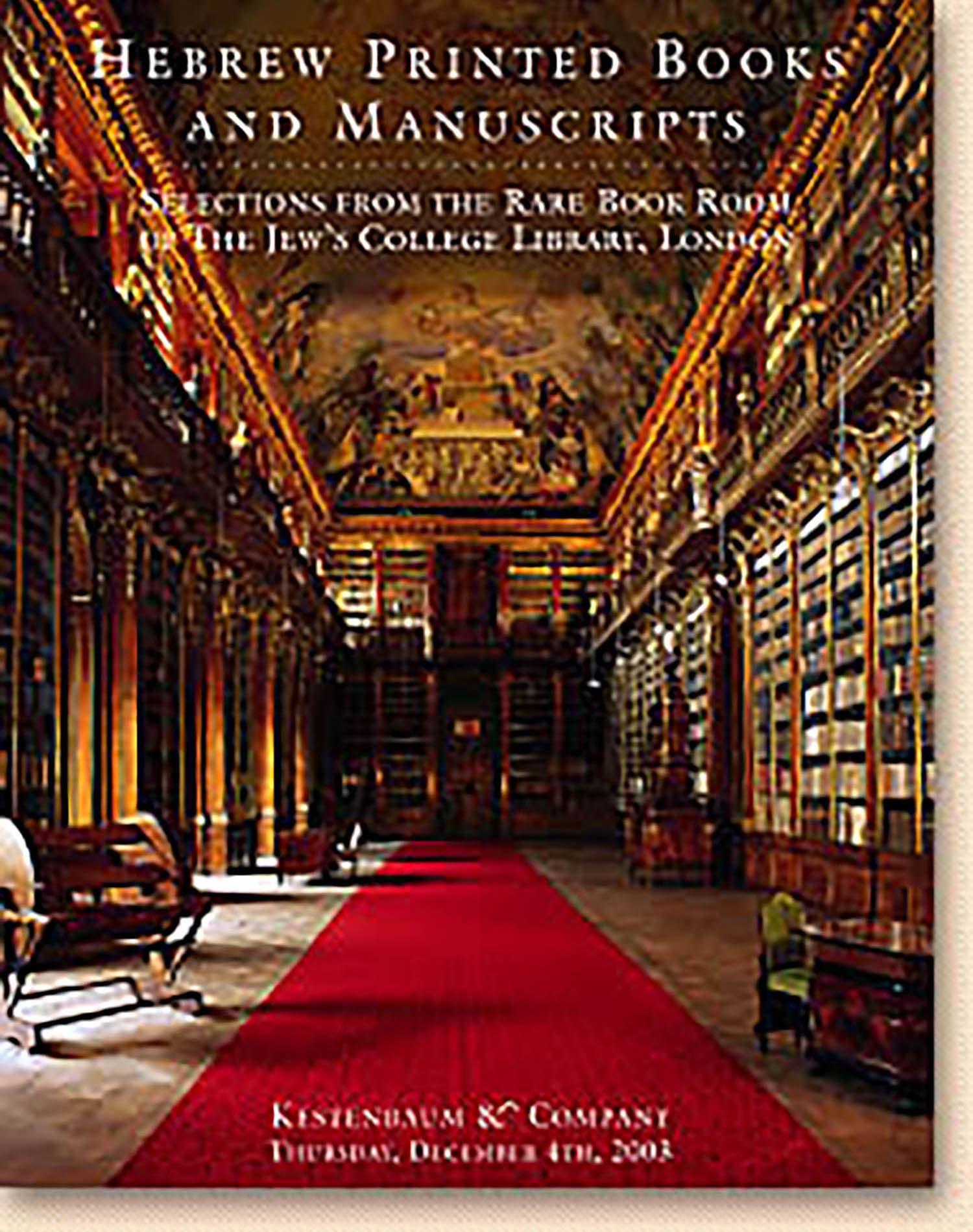Seder le-Arba Zomoth u-le-Arba Parshiyoth ke-Minhag Carpentras (The Carpentras Rite for Four Fasts and Four Special Readings)

AUCTION 21 |
Thursday, December 04th,
2003 at 1:00
Kestenbaum & Company Holds Inaugural Auction of Hebrew Printed Books & Manuscripts at Their New Galleries
Lot 158
(LITURGY).
Seder le-Arba Zomoth u-le-Arba Parshiyoth ke-Minhag Carpentras (The Carpentras Rite for Four Fasts and Four Special Readings)
Amsterdam: Hertz Levi Rofe and his Son-in-law Kosman 1762
Est: $800 - $1,200
The editor of this liturgy, Abraham Monteil, was a native of L’Isle (L’Isle-sur-la-Sorgue), smallest of “the four holy communities” of Comtat Venaissin, the papal territory in Southern France that historically provided a safe haven for Jews fleeing the provinces of Languedoc and Provence, from whence they were expelled by the French monarchs. (The other three communities in this tetrapolis were: Avignon, Carpentras, and Cavaillon.) The Jews of the Comtat had their own synagogue rite, now fallen into disuse. See C.Roth, “The Liturgy of Avignon and the Comtat Venaissin,” Journal of Jewish Bibliography I (1939) p. 99-105; reprinted in Cecil Roth, Studies in Books and Booklore (1972), pp. 81-87; EJ, Vol. 5, cols. 208, 859; Vol. 9, col.105; Vol. 11, col. 402.
